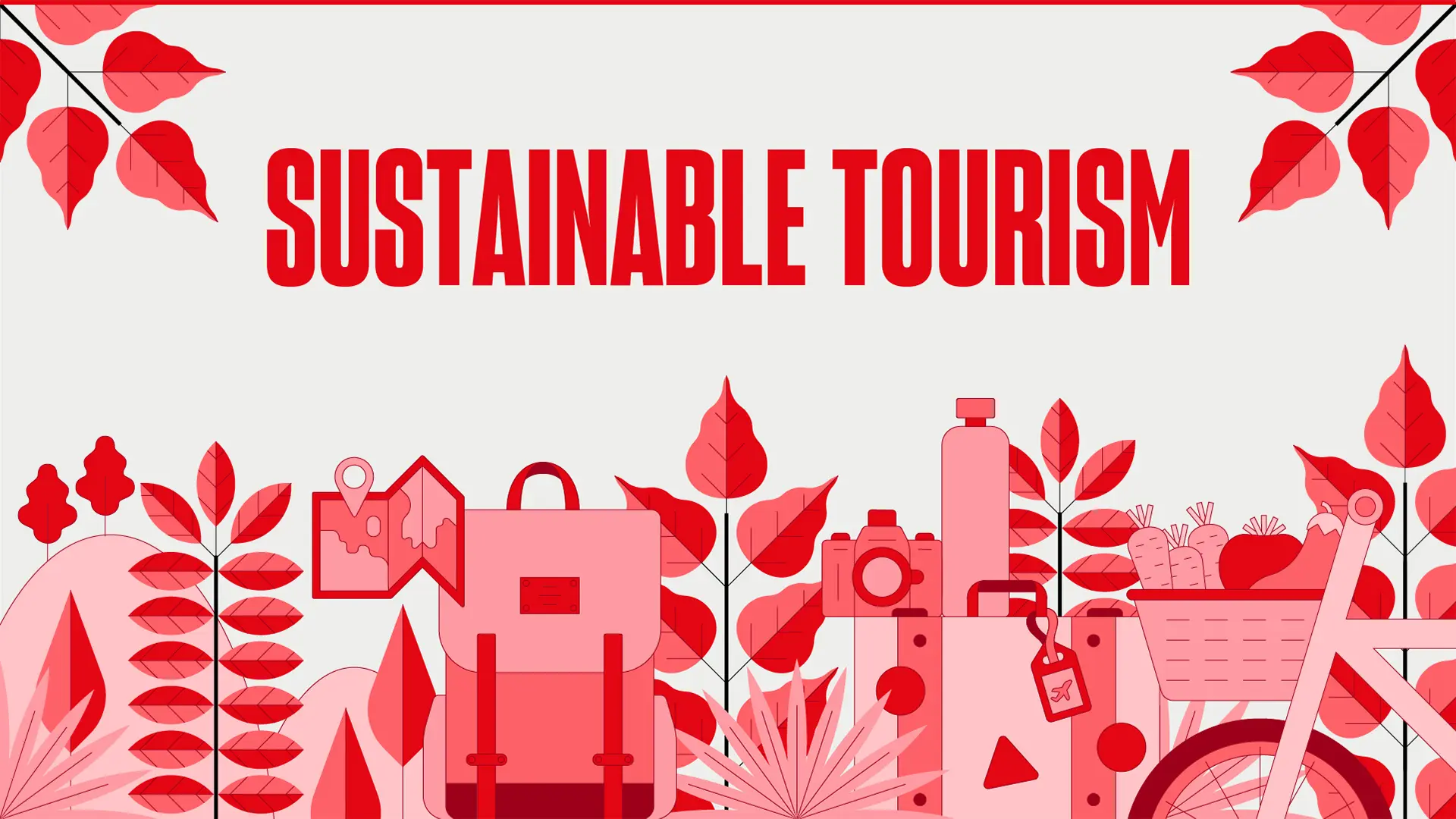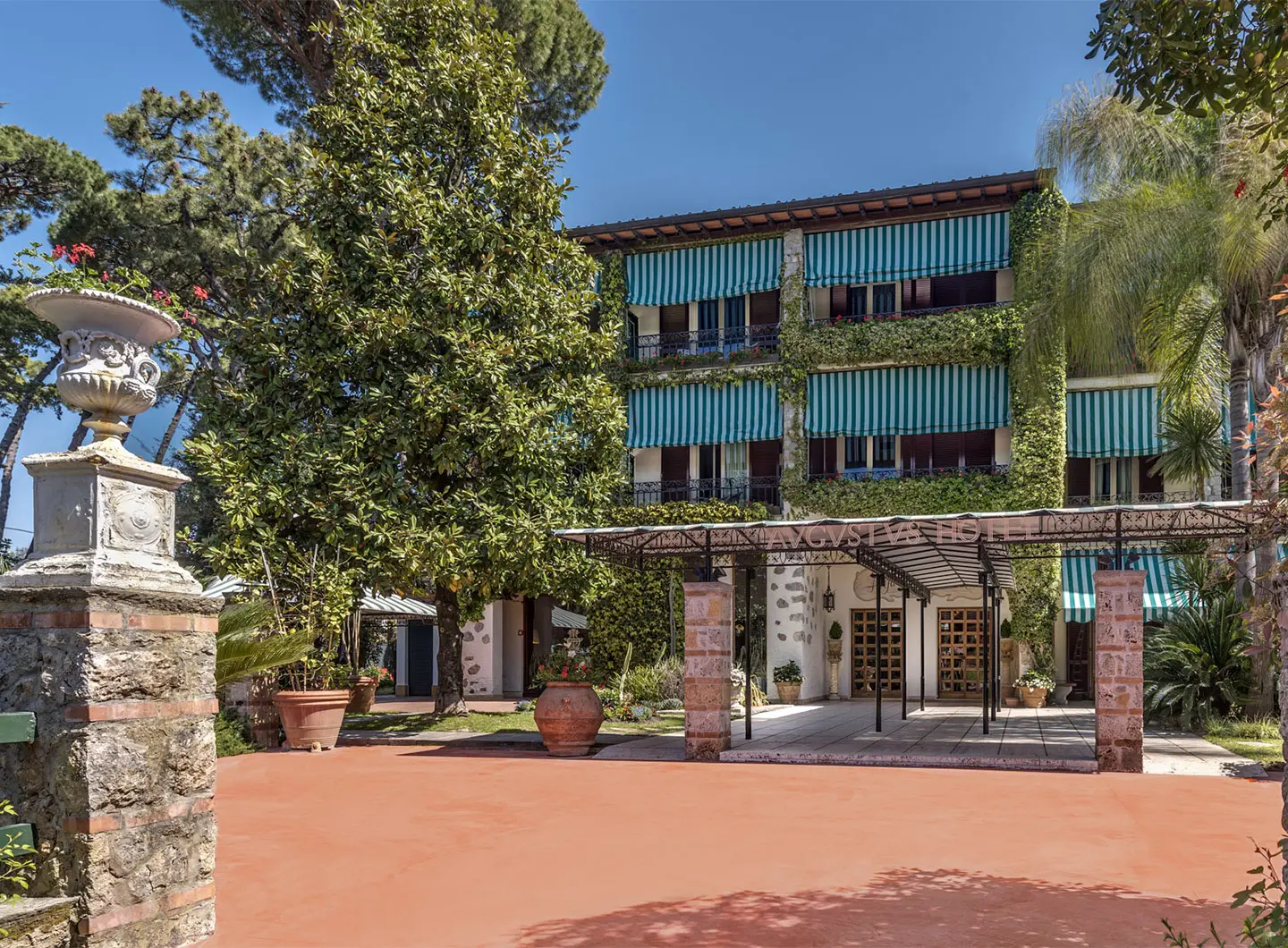For the third consecutive year, the Federation is taking part in the international fair on the circular economy. Helping to strengthen processes of value creation that are not just sustainable but also inclusive
Sustainable tourism: how to travel more responsibly

Infographic by Davide Mottes
Fewer emissions, more responsible resource management and a focus on reactivating local supply chains help to minimise the impact of the hospitality industry and make it more attractive to a growing tranche of consumers
Tourism is the direct cause of 8% of annual greenhouse gas emissions, according to the leading industry studies (The Carbon Footprint of Global Tourism, Nature, 2018).1 Estimates suggest that this figure is likely to increase between now and 2030 and that, unless measures are taken, emissions linked to projections of increased tourist travel and the relative transport will increase by 103% compared with 2005 (UNWTO data). The reversal of this trend is, however, within reach, directly linked to a set of actions and good practices that can contribute to a tangible lowering of the greenhouse gas curve.
The hospitality sector – which alone accounts for 1% of global emissions according to the Sustainable Hospitality Alliance (Sustainable Hospitality Alliance data) – is increasingly sensitive to the need to cut its environmental impact: this is what in jargon is known as sustainable tourism. These data show that many operators feel that the need to change the rules of the game can no longer be ignored. On the other hand, demand is mushrooming. A growing number of consumers say that sustainable tourism is a factor that could guide their choices when it comes to travel. Not just air travel, which is generates more greenhouse gases than all the other items inherent in “holiday packages”. In its latest report on sustainable tourism (Obiettivo Sostenibile. Nuove traiettorie di sviluppo del turismo italiano, 2022); Deloitte says: “74% of tourists interviewed believes that the fight against climate change also involves opting to stay in sustainable facilities,” which should also trigger a change of approach at the design stage.
What then are the choices that will enable tourism to have a lower impact? As regards reception infrastructures, sustainable hospitality means opting for local building materials, responsible water resource management, adopting energy efficient practices and employing renewable energy production technologies. Waste management, which is a particularly complex issue in small towns where the population explodes on a seasonal basis, should be reorganised to maximise not just recycling but also to clamp down on the production of waste upstream, starting with banning single-dose products and superfluous packaging. The change towards sustainability follows a win-win logic, after all: again according to the Sustainable Hospitality Alliance, with hotels applying sustainable measures potentially reducing their operating costs by up to a significant 30%.

Infographic by Davide Mottes
Aside from measures geared to optimising resources, the concept of sustainability is becoming broader, taking the identity of the territory into account, from both a natural and a social point of view. While safeguarding flora and fauna is here to stay, respect for the identity of places and the choices of the local population are factors that must be addressed, in a concerted fashion if possible, geared not to contribute to a downward homologation of tourist offerings, but to revitalising the cultural heritage, regenerating what already exists, and relaunching good quality job opportunities. The danger posed by mass tourism is clear to see: places wrecked by hit-and-run consumption not only have a dramatic environmental impact, but undermine tourist potential in the long term to the advantage of what might be called "minor" destinations, which have been able to preserve their character. Furthermore, Deloitte's study also tells us that the majority of Italians say they are prepared to pay 5-10% more - 20% of them up to an extra 15-20% – for services built around sustainable criteria.
Speaking of sustainable tourism, the New Shapes of Hospitality Round Table held during the last Salone del Mobile.Milano, offered further points of reflection shared by industry professionals. "The hotel dimension is becoming smaller, in line with an increased desire for escapism. Now we need spaces in which people can find themselves, with a greater focus on outdoor spaces,” said Wu Bin, designer and founder of W.DESIGN. It is the natural demographic change in clientele that is driving hotels towards change. As Andrea Obertello, General Manager of the Four Seasons Hotel Milano said: “Especially post-Covid, the age of our clientele has dropped by ten years, and this has caused us to reconsider how spaces best demand to be used. In terms of design, this is a challenge because we can’t overturn our brand identity, but are trying to respond to what the millennials want, which is a space that creates connections with local communities and demonstrates versatility of use, without being relegated to a single purpose.”
Recent hotel facilities have shown how implementing these good practices can go hand-in-hand with attractiveness. The jewel in the crown of Sorrento’s boutique hotel Palazzo Martinelli is its focus on healthy sleep: combined with the Boutique Mast system by Piero Lissoni for Porro, the beds are handcrafted with natural materials, creating the perfect microclimate for an ideal rest. The restyling of the 1947 Ara Maris building in Sorrento has transformed this 5-star destination into a new sustainable oasis. Surrounded by native vegetation, the facility conserves the original cubic capacity and colours, and has installed some photovoltaic panels on the façade for the production of clean energy. The interiors, designed by Molteni&C, allow the wood finishes to dialogue with the Mediterranean colours, and include furniture from the company’s catalogue, such as pieces by Ignazio Gardella, Rodolfo Dordoni, and Vincent Van Duysen. In Versilia, the new luxury Villa Ala resort, part of the Augustus Hotel & Resort, has harmonised a new villa with a renovated existing one, in a re-reading of local styles, such as Liberty-Deco, in a project boasting sophisticated contemporary culture, which includes interiors by De.Tales along with pieces by Desalto and Artemide. Lastly AMDL Circle has opted for the reuse of materials in its project for Le Case Del Prato, two new wooden buildings for the South Tyrolean Hotel Zirmerhof, designed with Michele De Lucchi and using trees brought down by Storm Vaia in 2018.



















